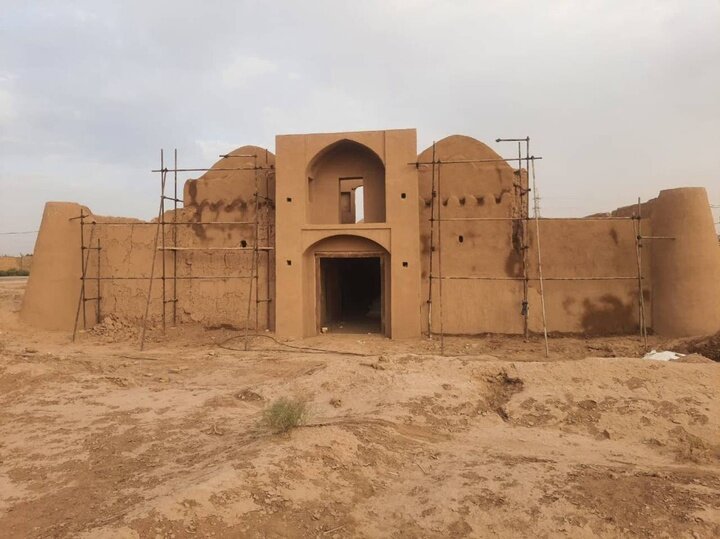Ancient Chapar-khaneh undergoes restoration

TEHRAN – A centuries-old Chapar-khaneh, which was once a postal relay station located in Ashkezar county of Yazd province, has undergone restoration.
This remarkable building dates back to the Zand Dynasty era and represents a significant piece of Iran's architectural heritage.
Chapar-khaneh played a crucial role in Iran's communication and transportation networks. These stations served as rest stops where messengers, known as chapars, could refresh themselves and exchange their horses for fresh ones, ensuring swift delivery across vast distances. Situated strategically along major routes, these structures were vital to the efficiency of the communication system, facilitating the rapid transfer of messages and goods.
Yazd Province, historically known as the crossroads of Iran, has been a vital link between the north and south as well as the east and west of the country. This region has witnessed the passage of countless Chapars and couriers over centuries, making it a key location for Chapar-khanehs.
The Chapar-khaneh boasts four prominent towers at each corner, each with a diameter of 3 meters. While these towers do not contain additional rooms, they add to the building's striking silhouette and were likely intended for defensive purposes.
Within the robust walls of the mud-brick structure, accommodations for animals can also be found, complete with troughs and hitching posts for the horses and mules that were central to the station's operations. The building itself spans an area of 500 square meters, with dimensions of 20 meters in width and 25 meters in length.
The current restoration project focuses on the structural reinforcement of the Chapar-khaneh, ensuring its stability and preservation for future generations.
Yazd is usually referred to as a delightful place to stay, or a “don't miss” destination by almost all of its visitors. It teems with mud-brick houses that are equipped with innovative badgirs (wind catchers), atmospheric alleyways, and many Islamic and Iranian monuments that shape its eye-catching city landscape.
It is a living testimony to the intelligent use of limited available resources in the desert for survival. Water is brought to the city by the qanat system. Each district of the city is built on a qanat and has a communal center.
AM
Leave a Comment